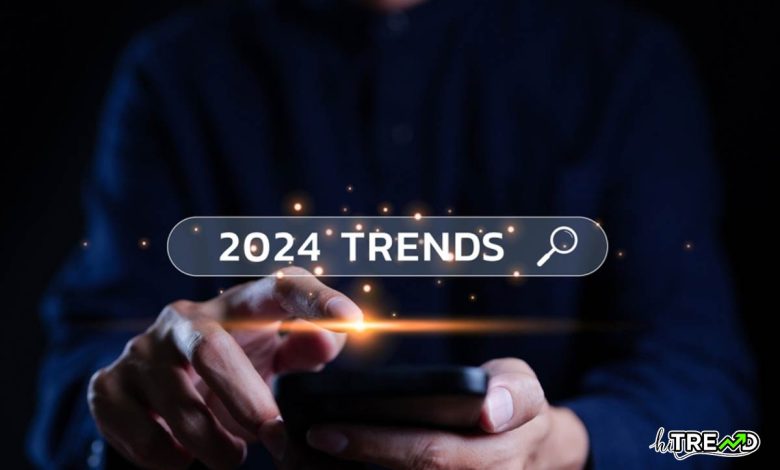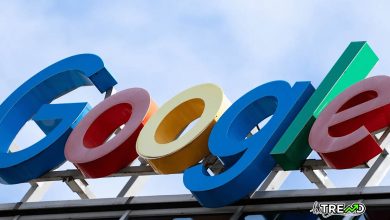Top 10 Digital Marketing Trends For 2024

It’s been a year of considerable disruptions in digital marketing so far.
Right now, the industry is dealing with the integration of generative AI and the impact this is going to have on user behaviour and how people search. Alongside the relentless updates that Google keeps throwing at us.
You can read more SEO articles
SEO is changing and the industry is trying to adapt whilst accepting the uncertainty.
But, it’s not all catastrophic, there is a lot of opportunity ahead for those that can evolve to embrace the new.
To help marketers and brands thrive amidst uncertainty, I’ve outlined trends to focus on, guided by strategic insights and Yogi Berra’s timeless wisdom,
“Predictions are hard, especially about the future.” – Yogi Berra
Digital marketers can no doubt relate to Yogi’s sentiment, acknowledging the challenge of what lies ahead.
These, then, are the top 10 digital marketing trends for 2024:
1. Strategy: “If You Don’t Know Where You Are Going, You Might Wind Up Someplace Else.”
Why is “strategy” this year’s top trend instead of the latest technology?
Well, as Yogi once observed, “If you don’t know where you are going, you might wind up someplace else.”
According to Spencer Stuart’s 2024 CMO Tenure Study, the average tenure of chief marketing officers (CMOs) at Fortune 500 companies in 2023 was 4.2 years.
The study also found the average tenure of CMOs at B2B companies was 4.5 years. It was 4.0 years for CMOs at B2C companies. And it was just 3.1 years at the consumer-heavy top 100 advertisers.
So, developing a digital marketing strategy that will generate above-average results within a couple of years is the key to keeping your job as the CMO of a big brand.
And if you don’t master the art and science of creating a digital marketing strategy that generates business outcomes, then you won’t land one of the CMO jobs that turn over each year.
In other words, learning to use the latest technology is necessary, but it won’t get digital marketing leaders and executives where they want to go.
Read more: What Is A Digital Marketing Strategy? 5 Steps To Create One
2. Generative AI: “Predictions Are Hard, Especially About The Future.”
Yogi also said, “Predictions are hard, especially about the future.” So, it’s tempting to ask generative AI tools to predict their own future.
OpenAI’s ChatGPT 3.5 says:
“AI and machine learning have been transforming digital marketing for years, but 2024 is poised to see these technologies become even more integral. From chatbots and predictive analytics to personalized content and ad targeting, AI will enhance customer experiences and drive efficiency. Brands leveraging AI can expect to see improved ROI and deeper customer insights.”
Google’s Gemini (formerly Bard) says:
“It ain’t science fiction anymore. Artificial intelligence (AI) is taking center stage, from crafting personalized chatbots that convert like crazy to optimizing campaigns with laser precision. Don’t fear the robot takeover, embrace it!”
And Anthropic’s Claude 3 says:
“Artificial intelligence writing assistants like Claude have been making waves, and in 2024 we’ll see these tools become ubiquitous in content marketing. They’ll help scale content creation while maintaining quality.”
But AI can’t see the big picture for your organization. It can’t empathize with people. And it can’t be creative like you. So, AI needs you in the driver’s seat to make it work effectively.
Read more: Generative AI And SEO Strategy: Getting The Most Out Of Your Tools
3. SEO: “It Ain’t Over Till It’s Over.”
Some pundits think SEO is dead. But as Yogi declared, “It ain’t over till it’s over.”
That’s because SEO pros have the remarkable ability to adapt to constant change or new information. Often, this means adjusting to the latest Google algorithm updates. But this also includes rethinking strategies based on the recent Google API “leak.”
Now, Rand Fishkin and Mike King were the first to report on the leaked documents. Although Google has officially acknowledged that these internal documents are authentic, it has also cautioned against jumping to conclusions based on the leaked files alone.
What should savvy SEO pros do?
Well, I’ve known Fishkin for more than 20 years. And he has the experience, expertise, authoritativeness, and trustworthiness (E-E-A-T) you’ve heard about.
So, I’m going to follow Fishkin’s recommendations, including:
Hire writers with established reputational authority that Google already associates with quality content.
Supplement link-building with public relations to increase branded search demand. (I’ll say more on this below.)
“Think about SEO as being more geographically specific than you think it is even for web search results.”
Move beyond parsing Google’s public statements and embrace experimentation and testing to uncover what produces results.
Read more: Google Ranking Systems & Signals 2024
4. Link Building: “Always Go To Other People’s Funerals; Otherwise, They Won’t Go To Yours.”
I spotted this trend a long time ago, and I spoke about it at SES London 2009 in a session titled, “Beyond Linkbait: Getting Authoritative Mentions Online.”
Back then, I said link bait tactics can be effective “if you focus on the underlying quality as well as ingenuity needed to get other websites to link to you.”
I also provided a couple of case studies that showed British SEO professionals how to “approach journalists, bloggers, and other authoritative sources to enhance your company’s online reputation, whether or not you get links.”
But getting authoritative mentions without links didn’t translate. People on the other side of the pond thought I was saying something unintentionally funny like, “Always go to other people’s funerals; otherwise, they won’t go to yours.”
Hopefully, Fishkin’s recommendation will enable a lot more SEO pros to finally understand the underlying wisdom of supplementing link building with public relations.
As he clearly explained at MozCon, “If you get a whole bunch of links in one day and nothing else, guess what? You manipulated the link graph. If you’re really a big brand, people should be talking about you.”
Read more: Link Building In 2024: What Works, What Doesn’t, And What’s Next?
5. Paid Media: “It’s Déjà Vu All Over Again.”
Everyone knows that Google, Meta, and other paid media are adding AI to their advertising platforms faster than the speed of sound. So, this might be mistaken as background noise.
But I’ve spotted the signal in the noise. Today’s frenzy to provide AI solutions is remarkably like the frenzy to provide programmatic solutions a decade ago. As Yogi said, “It’s déjà vu all over again.”
This means that digital marketers – and their agencies – can quickly refresh their “programmatic” workflow and turn it into “AI” best practices.
For example, Google touted a five-step programmatic workflow five years ago.
It consisted of:
Organize audience insights.
Design compelling creative.
Execute with integrated technology.
Reach audiences across screens.
Measure the impact.
Why is today’s process of buying and selling digital media in an automated fashion so similar? Because AI is just fulfilling the early promise of programmatic to engage with consumers in the moments that matter most.
But there’s one significant difference between then and now.
As you’ll read below, it’s the improved ability to integrate your advertising platforms with your analytics platform to measure the impact of campaigns on brand awareness and lead generation.
Read more: Paid Media Marketing In 2024: 7 Changes Marketers Should Make
6. Analytics: “You Can Observe A Lot By Watching.”
Performance marketers integrated their advertising platforms with their analytics platform more than a decade ago to measure the impact of their campaigns on “conversions.”
But brand marketers rarely focused on their analytics data because “brand awareness” was something they measured when consumers initially saw their display ads or watched their video ads.
A funny thing happened after Google Analytics 4 rolled out last summer. A “Business objectives” collection replaced the “Life cycle” collection of reports and one business objective you can now track is “Raise brand awareness.”
For example, brand marketers can now use traffic acquisition, demographic details, user acquisition, as well as which pages and screens users visit to measure brand awareness in places that are less vulnerable to ad fraud.
Another business objective you can now track is “Generate leads.”
So, digital marketers can measure any user action that’s valuable to their organization, including:
Scrolling to 90% or more of their blog post.
Downloading a whitepaper.
Subscribing to their newsletter.
Playing at least 50% of a product video.
Completing a tutorial.
Submitting a registration form.
And as Yogi noted, “You can observe a lot by watching.”
Follow HiTrend on X





